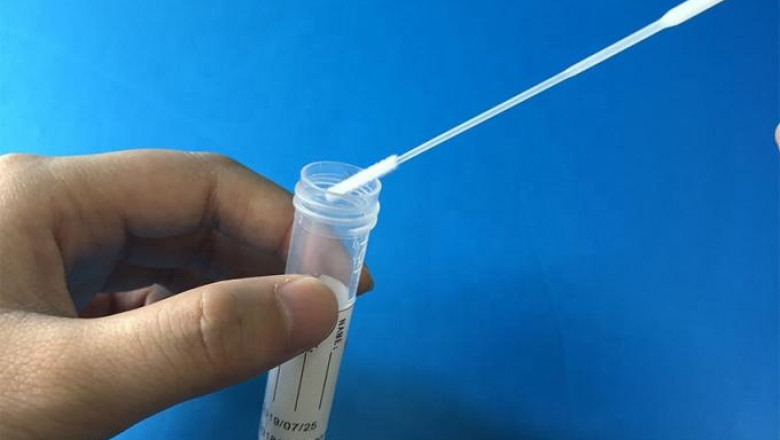views
The swab collection kit market has seen remarkable growth over the past few years, largely driven by the increasing need for fast and reliable diagnostic testing. Innovations in the design and application of swab collection kits are playing a crucial role in improving the efficiency, accuracy, and convenience of sample collection. These advancements are helping to address evolving healthcare needs, especially in areas such as molecular diagnostics, infectious disease detection, and self-testing. As the market continues to expand, manufacturers are focusing on new designs and materials to enhance sample quality, user-friendliness, and scalability. This article explores the key innovations shaping the swab collection kit market.
1. Enhanced Swab Materials and Technology
One of the most significant innovations in the swab collection kit market is the development of flocked swabs. Flocked swabs are designed with nylon or polyester fibers that are embedded in a nylon base, allowing for superior sample collection compared to traditional cotton swabs. The short, flexible fibers in flocked swabs improve the sample yield by efficiently absorbing and releasing biological material, which is crucial for molecular tests like PCR (Polymerase Chain Reaction). This has led to greater accuracy and sensitivity in diagnostic tests.
Moreover, manufacturers are increasingly incorporating materials that improve sample preservation during transportation. The introduction of transport media—special liquids or gels that stabilize biological samples—has made it possible to send swabs to testing laboratories without the risk of sample degradation, ensuring the integrity of the results.
2. Self-Collection and Home Testing Kits
Another major innovation is the development of self-collection kits. With the rise of consumer-driven healthcare, self-testing kits have become an integral part of the market, allowing individuals to collect their samples at home and send them to laboratories for analysis. These kits often come with step-by-step instructions, pre-labeled vials, and sometimes even mobile app integration to ensure proper sample collection.
Self-testing kits for COVID-19, flu, and STD tests have gained significant traction, as they offer convenience, privacy, and a more accessible way to perform necessary diagnostics. As demand for at-home diagnostics grows, swab collection kits are evolving to become more user-friendly, with improvements in packaging, instructions, and sample collection design to ensure accurate results.
3. Point-of-Care Applications
Advancements in point-of-care testing (POCT) have also contributed to the evolution of swab collection kits. These kits are designed for quick, in-field testing, enabling healthcare professionals or even patients to collect and analyze samples on-site, rather than waiting for lab results. For instance, swabs used for rapid antigen and rapid PCR tests can now provide near-instant results, which is crucial in settings like hospitals, airports, or remote clinics.
These innovations have made diagnostics more efficient, especially in urgent situations or locations where traditional testing infrastructure may be lacking. Additionally, compact, portable kits are now available, enabling diagnostic testing in both developed and developing regions, where access to laboratory facilities may be limited.
4. Integration with Digital Platforms
The integration of digital technologies is revolutionizing the swab collection kit market by enabling real-time sample tracking, instant result reporting, and telemedicine consultations. Many new kits are designed with QR codes or barcode tracking systems to ensure accurate sample identification and traceability. These systems also allow users to access their test results quickly via mobile apps or online platforms, reducing delays and enhancing the overall user experience.
Furthermore, integration with telehealth services allows patients to consult with healthcare professionals remotely, often providing more comprehensive care and guidance during the testing process. This is particularly beneficial for consumers using at-home diagnostic kits who need assistance with sample collection or result interpretation.
5. Sustainability in Swab Collection Kits
With growing concerns over environmental sustainability, manufacturers are innovating by creating eco-friendly swab collection kits. The shift toward sustainability has led to the introduction of biodegradable swabs and recyclable packaging. These innovations help reduce plastic waste while maintaining the functional integrity of the kits. Moreover, some companies are focusing on creating kits with non-toxic materials and recyclable components, catering to the increasing consumer demand for environmentally responsible healthcare products.
Conclusion
The swab collection kit market is seeing rapid advancements in design and application, driven by the need for more efficient, accurate, and convenient diagnostic solutions. Innovations such as flocked swabs, self-collection kits, point-of-care applications, and digital integration are enhancing the performance and accessibility of swab collection. Furthermore, sustainability initiatives are paving the way for environmentally conscious products. As healthcare continues to evolve, these innovations are likely to play a pivotal role in expanding the availability and efficiency of diagnostic testing, ultimately improving healthcare outcomes and patient satisfaction.






















Comments
0 comment